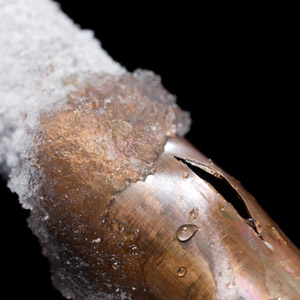As a Colorado engineer, I see many cases of plumbing fixtures being located on exterior walls. This may not be a concern in areas with less adverse climates, but for Colorado and other northern states it can be a dangerous practice. The fixtures I have seen located on outside walls include urinals, water closets (toilets) and showers. When the cold arrives there is little protection for a pipe that resides in an outside wall. Typically this is the recipe for a burst pipe. When the pipe thaws, you now have water under pressure in your wall. The water moves quickly, saturating insulation, destroying floors, carpet and other items it comes in contact with. If the owner is lucky, the situation is recognized immediately, if not the damage can be severe, at a time of the year when insulation and the building envelope are an important part of an occupants safety and comfort.

Many of the designers that locate these fixtures on exterior walls are relatively new in their area of expertise or have lived in less critical design areas. Some locate fixtures on outside walls to achieve a look or gain interior space, while others do it because they have done it before and haven’t had issues yet. Many will argue there is insulation in the walls so there is no need for concern. Insulation helps increase the time it takes for the cold to makes it way to the pipe, but its protection can be minimized if the cold finds a path to bypass the insulation.
The best prevention of burst water lines on exterior walls is not to locate pressurized water lines on exterior walls.





